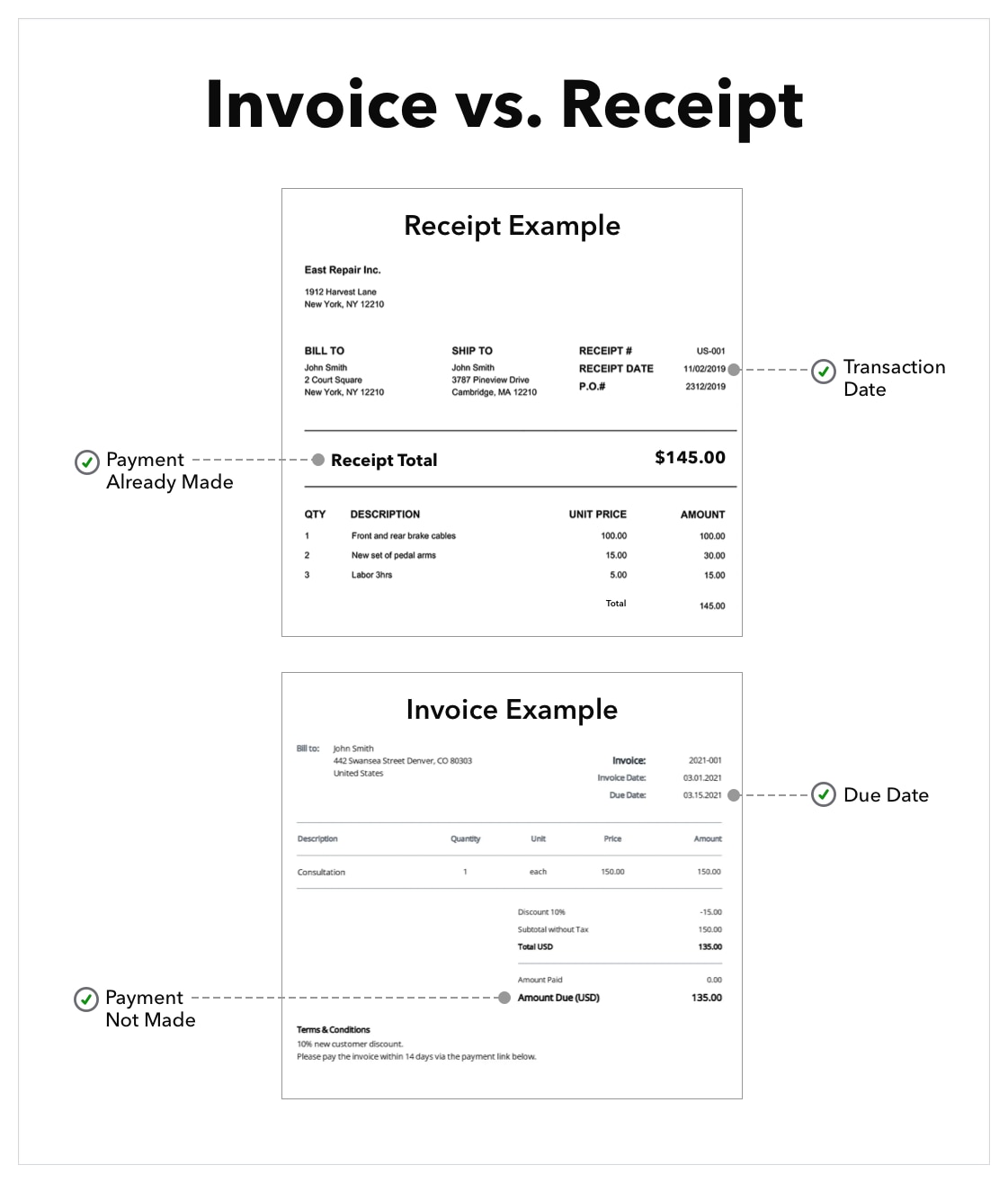An invoice is issued to collect payment from customers, and a sales receipt documents proof of payment a customer has made to a seller.
While these documents have some similarities, they are used for different purposes. This quick guide will help answer your questions about invoices and receipts so you can use them appropriately within your business.
- What is the difference between an invoice and a receipt?
- Does an invoice mean you’ve been paid?
- Can an invoice serve as a receipt?
- Can I issue an invoice after payment?
- Invoice vs. receipt example
What is the difference between an invoice and a receipt?
While invoices and receipts have some similarities, they are used at different stages of the sales process and document different information. The main difference is that invoices are issued before a business has received payment from a customer, and a receipt is issued after payment has been collected.
An invoice is used when a business has completed a customer’s order and needs to collect payment for the goods or services provided.
Key points to understand about invoices include:
- Invoices are issued to collect payment after a business delivers goods or services to its customers.
- The seller sends an invoice to the buyer to notify the buyer that payment is coming due.
- Invoices are more commonly used by service providers and during business-to-business (B2B) transactions.
A receipt is used as a proof of payment when a customer makes a payment to a business for goods or services.
Key points to understand about receipts include:
- A business provides a receipt to its customers as a record of a sale.
- Receipts outline when a transaction took place, how much a customer has paid, and which payment methods the customer used to make the payment. They also list the items or services the customer paid for.
- Receipts help buyers keep track of payments they have made.
- In many cases, customers will need a receipt to make returns to a business. Because receipts indicate proof of purchase, businesses can use them to verify a transaction.
- Because receipts are proof of a customer’s payment, they are issued by businesses of all types. Businesses should generally issue their customers receipts for any transactions made.




